Interorganelle communication, aging, and neurodegeneration
- PMID: 33861720
- PMCID: PMC8015714
- DOI: 10.1101/gad.346759.120
Interorganelle communication, aging, and neurodegeneration
Abstract
Our cells are comprised of billions of proteins, lipids, and other small molecules packed into their respective subcellular organelles, with the daunting task of maintaining cellular homeostasis over a lifetime. However, it is becoming increasingly evident that organelles do not act as autonomous discrete units but rather as interconnected hubs that engage in extensive communication through membrane contacts. In the last few years, our understanding of how these contacts coordinate organelle function has redefined our view of the cell. This review aims to present novel findings on the cellular interorganelle communication network and how its dysfunction may contribute to aging and neurodegeneration. The consequences of disturbed interorganellar communication are intimately linked with age-related pathologies. Given that both aging and neurodegenerative diseases are characterized by the concomitant failure of multiple cellular pathways, coordination of organelle communication and function could represent an emerging regulatory mechanism critical for long-term cellular homeostasis. We anticipate that defining the relationships between interorganelle communication, aging, and neurodegeneration will open new avenues for therapeutics.
Keywords: aging; cellular homeostasis; communication; contact sites; endolysosomal pathway; interorganelle communication; lipid metabolism; mitochondria; neurodegeneration.
© 2021 Petkovic et al.; Published by Cold Spring Harbor Laboratory Press.
Figures
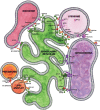
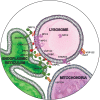
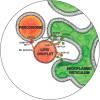
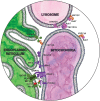
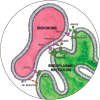

References
-
- Area-Gomez E, del Carmen Lara Castillo M, Tambini MD, Guardia-Laguarta C, de Groof AJC, Madra M, Ikenouchi J, Umeda M, Bird TD, Sturley SL, et al. 2012. Upregulated function of mitochondria-associated ER membranes in Alzheimer disease: upregulated function of MAM in AD. EMBO J 31: 4106–4123. 10.1038/emboj.2012.202 - DOI - PMC - PubMed
Publication types
MeSH terms
Grants and funding
LinkOut - more resources
Full Text Sources
Other Literature Sources
Medical
